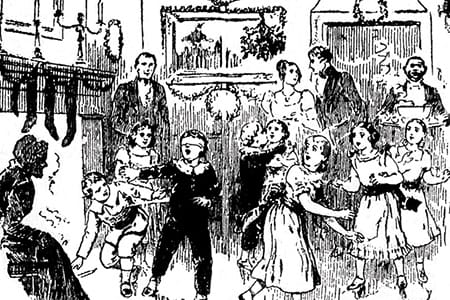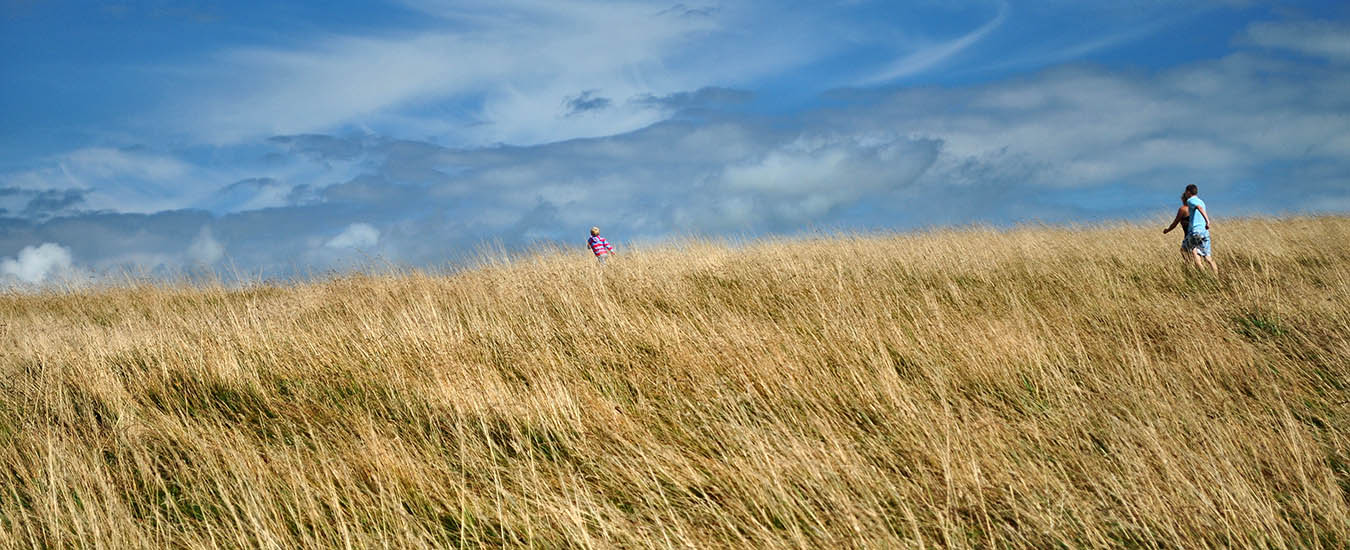Newspapers of the past report hundreds of holiday stories that don’t always fit our nostalgic notions—here are just a few.
Ask anyone, of any age, about their Christmas memories and they will likely paint a romantic picture dripping with nostalgia for Christmas past.
Thinking of a Victorian era Christmas, most will conjure up a family gathered around a candlelit tree in a room bedecked with greenery, stockings hung by the chimney. He or she will imagine the strain of familiar carols being sung by a small group gathered around a piano or organ. On a buffet laden with Christmas trinkets is the wassail bowl, from which cups of bubbly punch are drawn. If you listen intently, over the excited cries of the children playing tag, you’ll hear the sound of the fire snip-snapping in the fireplace—or even the sound of Clement Moore’s famed eight tiny reindeer on the roof, if one of the adults has crawled up there to create a magical moment.
The dreamer would not likely give a thought to the anomalies of the season, but thanks in part to Nova Scotia’s Joseph Howe—who argued that newspapers should be allowed to interpret and herald events—newspaper archives provide quirky chronicles of days gone by.

Santa’s New Brunswick troubles
Santa seems to have had a few problems historically in the province of New Brunswick. During what is considered to be his earliest appearance in these parts, as arranged by Fredericton confectioner Charles Sampson in 1872, he was snowballed by the city’s teens on a reconnaissance mission a few days before Christmas. Sampson had to take out an advertisement warning that if it happened again, the youths would be charged. After that, Santa successfully delivered Sampson’s candy and toys for three years without incident.
Santa made his first department store appearance in all of Canada in the window of Manchester, Robertson & Allison’s big store on Saint John’s King Street on Saturday night, December 17, 1887. The crowd was so immense that ladies fainted, and the window blinds had to be drawn so Santa could not be seen. People continued to mill about in such numbers that the police had to be called to disperse the crowd.
That same year, Santa, played by W.O. Roxboro, appeared at the Fairville Methodist Church’s Sunday School program on the western outskirts of Saint John. Unfortunately, Santa got too close to the candlelit tree. He caught fire and had to be rushed outside and rolled in a snowbank. Santa survived.
One of the most unusual retail promotions occurred in Moncton in 1904 in front of the L. Higgins shoe store; the owner threw 2,000 pennies to the children gathered in front of his store. One lad showed up with a barrel, hoping to catch the majority of the pennies, but was jostled out of position by other boys and girls, who picked pennies out of the snow for an hour.
In 1936, progressive Moncton merchant, C.H. Blakeny, was opening a new store on St. George Street. He conceived the idea of telling local children that Santa would fly in to the Moncton airport, and then come to the store to greet them.
Hundreds of children showed up at the store to see the old fellow, and six city policemen were called in to keep order. Children became separated from their parents, hats and boots were lost, and the store’s plate glass window was shattered in the crush of bodies. Blakeny never invited Santa again.
More recently, to spice up the program when the Dr. Roberts Hospital School was to mark its 10th anniversary on Sand Cove Road in Saint John in 1974, the staff decided to have Santa bail out of a low-flying airplane at a children’s party. Unfortunately, the pilot could not get the craft to cooperate due to high winds.
Santa, not wanting to disappoint the kids, bailed out anyway, falling onto a parked car and breaking his leg. It took staff considerable time to settle the children down when they saw Santa being taken away by ambulance.
A few celebratory drinks
Revelry fuelled by alcohol has been an occasional part of Christmas past. Though the temperance movement was strong, and the Scott Act of 1878 eventually led to the prohibition of spirits being sold, newspapers in all four Atlantic provinces indicate that strong drink was not hard to procure. In 1911, the Charlottetown Guardian reported, “A regrettable feature of the observation of the holiday season was the amount of drunkenness visible… and a good deal of fighting was observed.” That this was a long-standing occurrence can be seen in records of Christmas Day arrests—violators’ names were printed each Boxing Day in papers of the era. The low number was cause for rejoicing. For example, on December 26, 1899, the St. John’s Daily News noted, “There were only six prisoners at the lockup on Saturday night for drunk and disorderly conduct.” The editor concluded the report saying, “This is a remarkable record for Xmas eve.”
Sailors ashore, especially in Saint John and Halifax, were among the more lively celebrants of the season—and among the biggest consumers of the “spirits.” When a ship was docked on Christmas Day, there would be a traditional meal on board, but most preferred to celebrate ashore. On Christmas 1886, two sailors off the steamer Sarnia got leave in Halifax; due to the “allurement of the grog shops,” they lost track of time and did not realize it was boarding time until they heard the ship’s whistle. At that point, they dashed to the north end wharf and dove into the harbour in an attempt to swim to the departing vessel. They did not make it.
Family entertainment?
We still play some of the Christmas games that our ancestors enjoyed—charades, blind man’s bluff, hunt the slipper—but “snapdragon” is not a common Christmas afternoon activity these days. From the Saint John Globe on December 24, 1879: “A number of raisins are put into a large, shallow bowl… and spirits are poured over the fruit.” Then the lights are extinguished, the spirits set afire, and “the bystanders in turn plunge their hands through the flames and endeavour to obtain possession of the fruit.” (It’s quite evident why this game has fallen out of favour.)
Musical presentations and dances to make Christmas more cheerful were widely offered during the latter part of the 19th century. Not all the events went off smoothly, however. On December 27, 1889, the Charlottetown Daily Examiner noted a show in the PEI capital where “a prominent corner [of the hall] was occupied by a group… whose loud talking and ill-bred conduct during the Concert was anything but pleasing.”
Christmas nuptials
Christmas weddings are not so common these days, but in pioneer times, farm chores slowed as winter approached, and Christmas became “the time” for such ceremonies. This continued into the early 20th century. The Moncton Times of December 26, 1888, reported the Caledonia wedding of Sarah L. Stewart to Daniel Cleveland before 75 to 100 “happy faces” on Christmas evening. The wedding ceremony was likely followed by a “chivaree,” or all-night merrymaking that followed such ceremonies, but this wasn’t noted in the Times. However, that same day, the Times did report on another chivaree: “A number of young men were serenading a wedding party… and some of them were under the influence of the ardent” when “two [of the men], Alcorn and Bird, got into a dispute,” which resulted in Bird being knifed and the doctors being called.
And so it goes. No doubt there will be a few aberrations again this year—and some might even be on the record.
